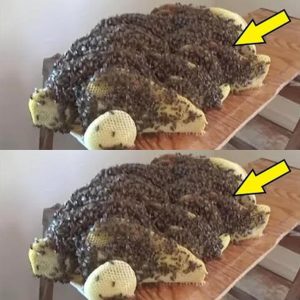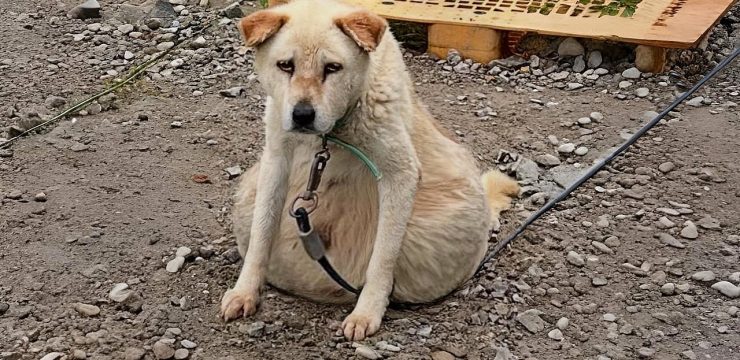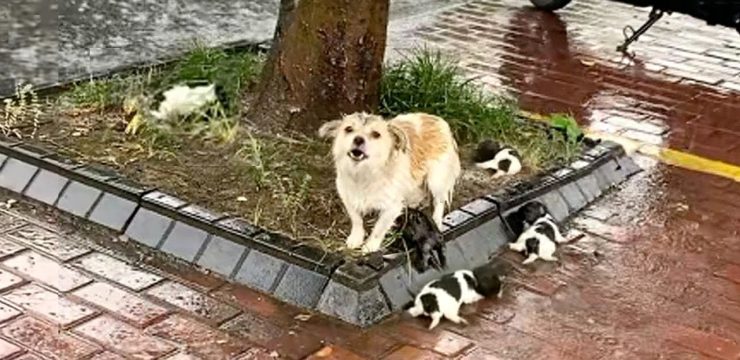Imagine settling in for a peaceful night of sleep, only to discover that you’ve been unknowingly sharing your room with some unexpected guests. That’s exactly what happened to one woman when she found a wasp nest right beneath her bed. The mere thought of wasps living just inches away while you sleep is enough to send shivers down anyone’s spine.

Wasp nests can appear in the most unexpected places, and finding one inside your home can be an unsettling experience. Typically, wasps prefer to live outdoors, building their nests in trees, under eaves, or in sheltered corners. However, when searching for a warm, quiet, and undisturbed spot, they may find their way indoors. Areas like basements, attics, wall cavities, and, in some cases, even beneath beds, can become an appealing nesting location. Since these insects are naturally drawn to small crevices and hidden spaces, any opening leading inside your home might just become their new entryway.
For many, the idea of sleeping so close to a buzzing colony of wasps is terrifying. The reality is that wasps don’t typically attack unless provoked, but having them so close increases the risk of an accidental disturbance. A simple movement, such as shifting in bed or knocking an item over, could send vibrations through the structure they’ve built, making them feel threatened. When wasps perceive danger, they can quickly become aggressive, defending their nest by stinging repeatedly. Unlike bees, which sting once and then die, wasps can sting multiple times, making them a particularly intimidating presence in the home.
If you ever find yourself in a situation where a wasp nest has appeared in your home, it’s important to know how to handle it safely. Panicking or making impulsive decisions can lead to unnecessary danger. Instead, keeping a clear head and following the right steps can prevent injury and allow you to manage the situation effectively. Here are some crucial things to keep in mind:
First and foremost, stay calm. This might seem easier said than done, but wasps are highly reactive to sudden movements and perceived threats. If you freak out and start moving erratically, you might provoke them into defensive behavior. Take a deep breath, keep your movements slow and controlled, and avoid making any loud noises. The less disturbed they feel, the less likely they are to react aggressively.
Next, maintain a safe distance. As tempting as it might be to get a closer look at the nest or inspect its size, it’s best to stay as far away as possible. Wasps have strong territorial instincts and will defend their home if they sense an intruder. Keeping a reasonable distance not only protects you from accidental stings but also gives you time to assess the situation and decide on the best course of action.
Avoid touching or disturbing the nest at all costs. Even if the nest appears small or inactive, there could be dozens—or even hundreds—of wasps inside. Knocking it down or poking at it can trigger an aggressive swarm, which can be incredibly dangerous, especially indoors where escape routes might be limited. While some people may be tempted to handle the situation on their own, using sprays or attempting to remove the nest themselves, this is not recommended unless you have experience dealing with wasps. A single mistake can quickly escalate the situation into a serious safety hazard.
Instead, the safest and most effective way to handle a wasp nest is to call a professional. Pest control experts have the proper equipment, protective gear, and experience needed to remove the nest without causing harm to you, your household, or even the wasps themselves. Many exterminators use humane removal methods, relocating the colony rather than destroying it when possible. By relying on experts, you eliminate the risks associated with DIY removal and ensure that the problem is handled thoroughly.
Once the nest has been safely removed, the next important step is to prevent future infestations. Wasps often return to locations where they’ve built nests before, so it’s crucial to take proactive measures to keep them from coming back. Start by inspecting your home for any gaps, holes, or cracks that might serve as entry points. Seal any openings around windows, doors, vents, and other potential access areas. If your home has an attic or crawl space, make sure it is properly sealed and ventilated.
Additionally, keep an eye on areas that aren’t frequently used, such as garages, sheds, and storage rooms. Since these spaces often remain undisturbed for long periods, they can be attractive to wasps looking for a secure place to nest. Regularly checking these areas, especially during the warmer months when wasps are most active, can help you catch any early signs of a developing nest before it becomes a bigger problem.
Another way to discourage wasps from settling near your home is to remove any food sources that might attract them. Wasps are particularly drawn to sugary substances, so be mindful of where you place outdoor food, drinks, or garbage. Secure trash bins with tight-fitting lids, avoid leaving sugary drinks uncovered, and clean up any spills promptly. If you have fruit trees or flowering plants near your home, regularly pick up any fallen fruit to prevent wasps from gathering.
For those who spend a lot of time outdoors, particularly in garden areas or patios, using wasp deterrents can also be beneficial. Some homeowners have success with natural repellents, such as planting mint, citronella, or eucalyptus, which are known to deter wasps. Others opt for commercial wasp traps that lure the insects away from high-traffic areas.
While the idea of finding a wasp nest inside your home is alarming, it’s important to remember that with the right approach, the situation can be managed safely. By staying calm, keeping your distance, and seeking professional help, you can ensure that both you and the wasps remain unharmed. After removal, taking steps to secure your home and deter future nests will provide peace of mind and prevent unwanted surprises in the future.
In the end, wasps are simply following their instincts, seeking out the safest place to build their nests. While they may not have meant to invade your space, it’s crucial to handle the situation responsibly and effectively. With proper awareness and preventive measures, you can keep your home wasp-free and enjoy a safer, more comfortable living environment.





